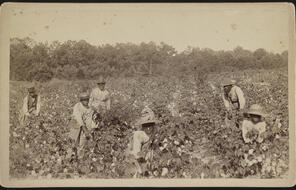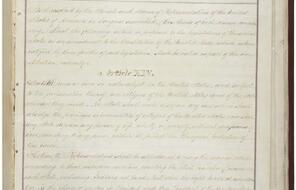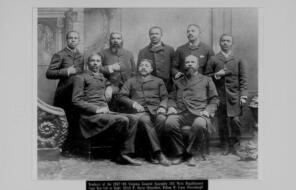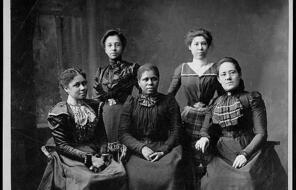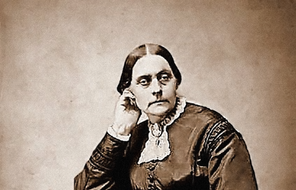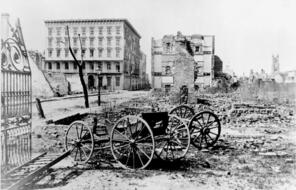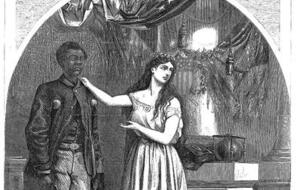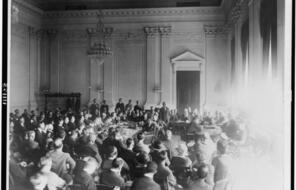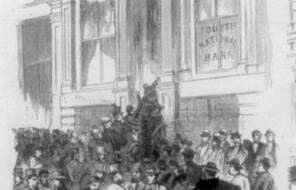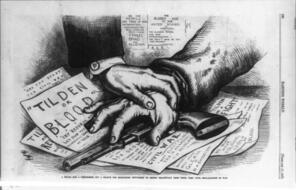What Did You Learn in School Today?
At a Glance
Language
English — USSubject
- History
- Racism
The following is an Introduction to Teaching Mockingbird and was written by Facing History's Senior Scholar and President Emerita, Margot Stern Strom.
To Kill a Mockingbird is set in a small town in Alabama in the 1930s, a town much like the one in which author Harper Lee came of age. Although I grew up a generation later, I see much of myself in Scout, the young white girl who narrates the book. Like Alabama in the 1930s, Tennessee in the 1950s was a place where separate never meant equal. It was a place where “colored” water fountains did not spout brightly colored water as a child might expect, but stood as symbols of the dogmas of racism, which meant indignity, shame, and humiliation for some and indifference, false pride, and hate for others.
At school my teachers carefully avoided any mention of race, class, or gender. Like Scout, I learned those lessons from my family. When Scout comes to her father with questions about human behavior, he doesn’t give her advice on what to say or do. Instead, he tells her that the “trick” to understanding another person is to consider things from his or her point of view. For nearly 40 years that has been the work of Facing History & Ourselves. We trust students to wrestle with complex choices in the past and present so that they will better understand the social mores of our time. We encourage them to think critically and independently in much the way that Atticus, Scout’s father, engages his children.
Like my teachers, Scout’s teacher misses an opportunity to trust her students with the complexities of history and human behavior. In one lesson, a child, Cecil, shares his current event: the fact that “old Adolf Hitler has been prosecutin’ the Jews.” Miss Gates stops him to correct his choice of words; it is “persecuting,” not “prosecuting.” Cecil shrugs off the correction and describes how Hitler’s “puttin’ ’em in prisons and he’s taking away all their property and he won’t let any of ’em out of the country.”
Another child asks how Hitler can just lock up people without the government stopping him. Miss Gates replies, “Hitler is the government.” And then, “seizing an opportunity to make education dynamic,” she prints “DEMOCRACY” in large letters on the chalkboard and asks for a definition. Scout responds by reciting an old campaign slogan she learned from her father: “Equal rights for all, special privileges for none.” Miss Gates smiles her approval and prints “WE ARE A” in front of the word “DEMOCRACY” on the chalkboard. She then tells the class that this is the difference between America and Germany: “We are a democracy and Germany is a dictatorship.” She goes on to say, “Over here we don’t believe in persecuting anybody. Persecution comes from people who are prejudiced.” And she enunciates the word: Pre-ju-dice.
When a student asks why the Germans don’t like Jews, Miss Gates says she doesn’t know the answer but perhaps it’s because they are a “deeply religious people” and “Hitler’s trying to do away with religion.” At this point, Cecil offers another explanation. He tells Miss Gates he doesn’t know for certain, but the Jews are “supposed to change money or somethin’, but that ain’t no cause to persecute ’em. They’re white, ain’t they?”
Miss Gates responds by shutting down the discussion. Surely she knows, as most people did at the time, that Hitler was persecuting Jews because he claimed they belonged to an evil and inferior race; but race is a forbidden subject in a community where Jim Crow is part of the fabric of society. So Miss Gates decides to ignore Cecil’s question and move on: “Time for arithmetic, children.”
Scout spends the rest of the period looking out the window, convinced that school is irrelevant. It doesn’t help her reckon with the prejudices that inflame the community during the trial of Tom Robinson, an African American her father defends in court after Robinson is falsely accused of raping a white girl.
It is at home that Scout and her older brother, Jem, begin to confront the injustice done to Robinson and begin to acknowledge the racism that defines their community and underpins its legal system. When Jem expresses his anger at the jury that convicted Robinson, Atticus tells Jem that if he and 11 other boys like him had been on that jury, Tom would be a free man. He goes on to say of the actual jurors:
Those are twelve reasonable men in everyday life, Tom’s jury, but you saw something come between them and reason . . . . There’s something in our world that makes men lose their heads—they couldn’t be fair if they tried. In our courts, when it’s a white man’s word against a black man’s, the white man always wins. They’re ugly, but those are the facts of life.
Jem mutters that those facts don’t make things right; his father agrees. He reminds the boy that “the one place where a man ought to get a square deal is in a courtroom, be he any color of the rainbow, but people have a way of carrying their resentments into a jury box.” Atticus tells Jem and Scout that someday there will be a “bill to pay” for the injustices, the violence, and the persecution.
That day has not yet come. As a result, Scout and Jem are attacked by a white man because their father defended a black man in court. In the end, the children are saved by Boo Radley, a neighbor who is a recluse. Scout and Jem have always imagined him as a monster who threatens small children. By the end of the book, they discover that he has been quietly protecting them at a time when their father could not. After saving their lives, “Mr. Arthur” (as Scout now thinks of Boo) allows the young girl to walk him home. As they reach his house, Scout realizes her father was right to tell her that “you never really know a man until you stand in his shoes and walk around in them.” Later that evening, Scout decides that she and her brother would eventually “get grown,” but as a result of their experiences with the trial and with Boo, “there wasn’t much left” for them to learn at school, “except possibly algebra.”
When Harper Lee’s book was published in 1960, it became an overnight sensation. Courageous African Americans were bringing issues of race, fairness, and simple justice to the attention of the nation and the world by appealing to the conscience of all people everywhere. The discussions they inspired are at the heart of a democratic society—one that truly strives to provide “equal rights for all, special privileges for none,” one that insists on “a square deal” for every individual in its courtrooms and every child in its classrooms. To Kill a Mockingbird is as relevant today as it was in 1960; there have been significant gains, but we still have a way to go. These issues are at the heart of a Facing History & Ourselves classroom.
How to Cite This Reading
Facing History & Ourselves, “What Did You Learn in School Today?,” last updated March 14, 2016.
This reading contains text not authored by Facing History & Ourselves. See footnotes for source information.


